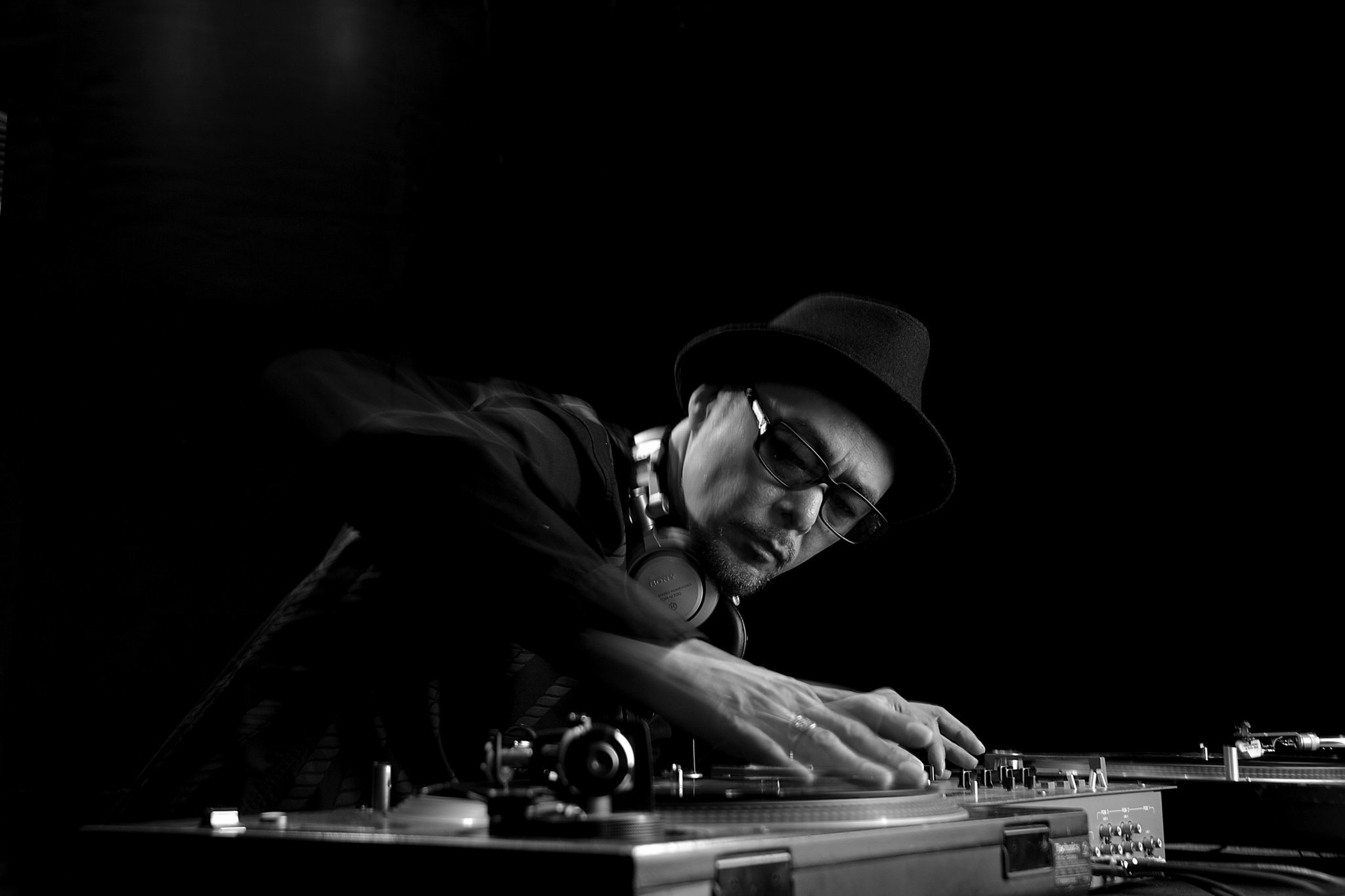International hip-hop is a bastard child of sorts. Folks often disregard it, underestimate it, or worse yet—have no idea it exists. You mean they have turntablists in Russia? Emcees in Paris? B-boy battles in Japan? Answers: Yep, yep, and… yep. And that’s not even taking into account large scale events like Frankfurt, Germany’s Splash Festival or the scenes sprouting up in places like Sweden and Italy. And while some international artists attempt to emulate a cosmetic image of American hip-hop culture, sporting dew rags, gold-soaked Jesus pieces, and velour running suits—the trendsetters are often the soft-spoken vinyl junkies and studio types busy plotting the future of the art form. That’s where DJ Krush comes in.
Eight albums deep and 20 years spent globetrotting, Krush (born Hideaki Ishi) is one of the most respected artists in international hip-hop; the type of individual whose body of work and high caliber skill precedes him. And while Krush has long been at the forefront of the Japanese hip-hop movement, his initial inspiration came from a place straight out of hip-hop’s history books—South Bronx, New York, circa 1982.
“Back then, I was getting into trouble, not knowing what I wanted to do with my life,” Krush says. “Seeing [the film] Wild Style hit the deepest chord in my existence. It was just exhilarating to see this new form of music, this vibrant scene. It was the beginning of hip hop as we know it.” But while the art form may have been building steam in America, Japan was on somewhat of a timed delay—a detail that Krush now finds amusing.
“I couldn’t get the old man at the music store to sell me two turntables,” he says. “He wouldn’t quit about ‘I only needed one turntable to listen to records!’ Look how far we have come.”
After founding the Krush Posse in 1987, a group recognized as one of Japan’s first great hip-hop exports, the upstart DJ later forged a fruitful solo career—releasing highly influential albums throughout the 1990s on James Lavelle’s famed Mo Wax label. It was during this time that Krush, alongside luminaries such as DJ Shadow, helped redefine the aesthetics of underground electronic production — igniting what would later be dubbed “trip-hop,” the precursor to today’s instrumental hip-hop movement.
Krush’s distinct style, spare production fused with dark sonic undercurrents, has long been praised for its multi-layered, orchestral approach. Often hailed as “the musician’s DJ,” Krush, in the early 90s, was one of the first artists to integrate turntablism (before the phrase was coined) with live instrumentation.
With his latest album, Jaku (which translates to mean “peace and calm”), Krush continues his envelope-pushing work while at the same time paying homage to his Japanese heritage — blending traditional Japanese instrumentation with his signature production style.
“On this album I wanted to work with live instruments, some Japanese traditional instruments,” he explains. “Sometimes it is hard, or how shall I say, embarrassing to look to your own cultural traditions; if you never [gotten] around to it for some reason.” Though this process of cultural rediscovery may have been humbling, Krush’s masterful use of instruments like wooden flute (shakuhachi) and Japanese strings (koto) on tracks like “Still Island” and “The Beginning” show his natural adaptability as a producer.
And although Krush, now 41-years-old, may be a veteran by hip-hop standards, the forward-thinking DJ/ producer is still bent on further evolving his sound.
“I will never be completely happy or satisfied,” Krush says. “I [always] tell people, I have a vision of myself when I am 70 or 80. I will still be spinning and making music and my nurse will be feeding me via I.V.”
This article originally appeared in the Pittsburgh City Paper in October 2004.
